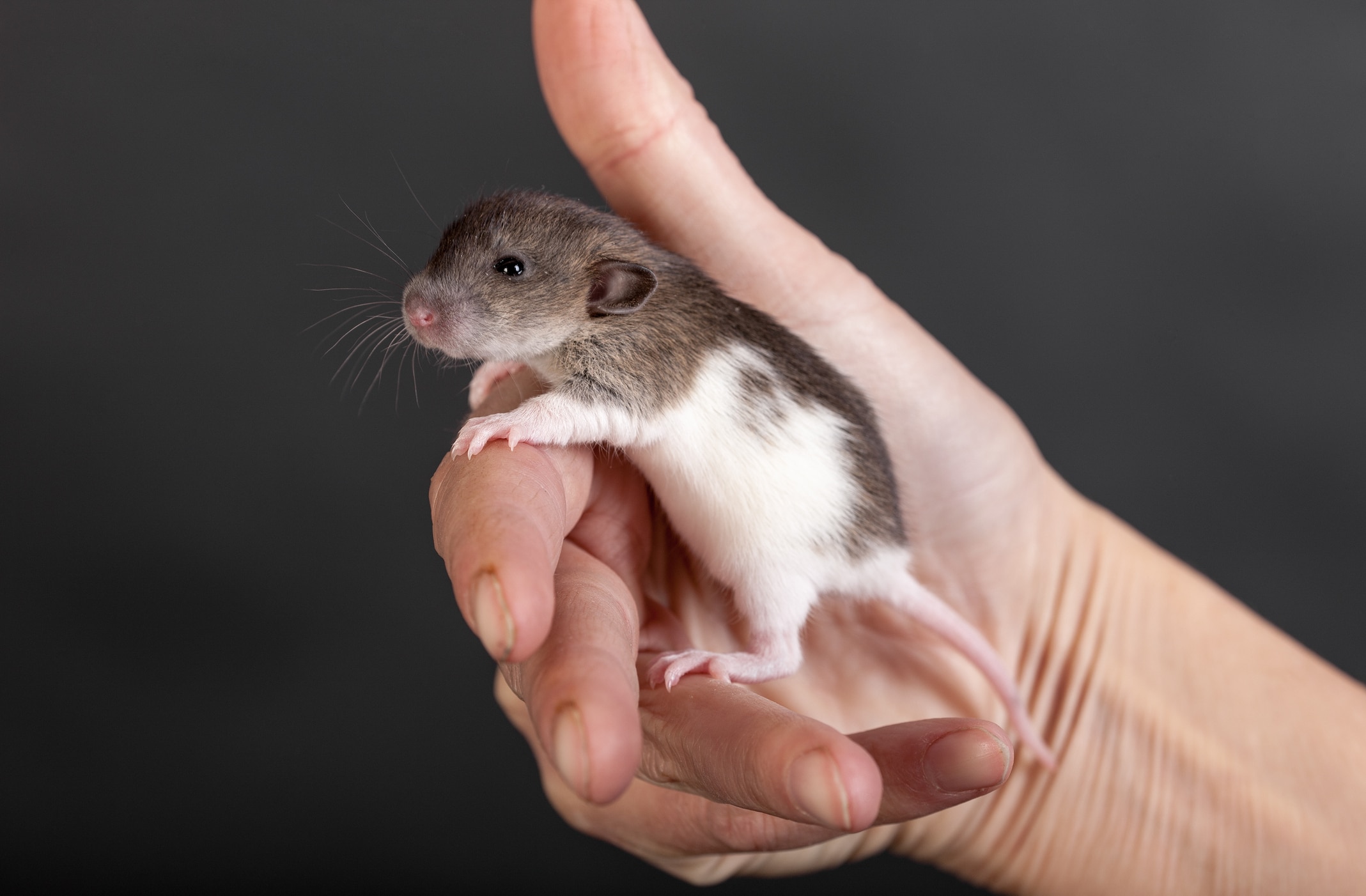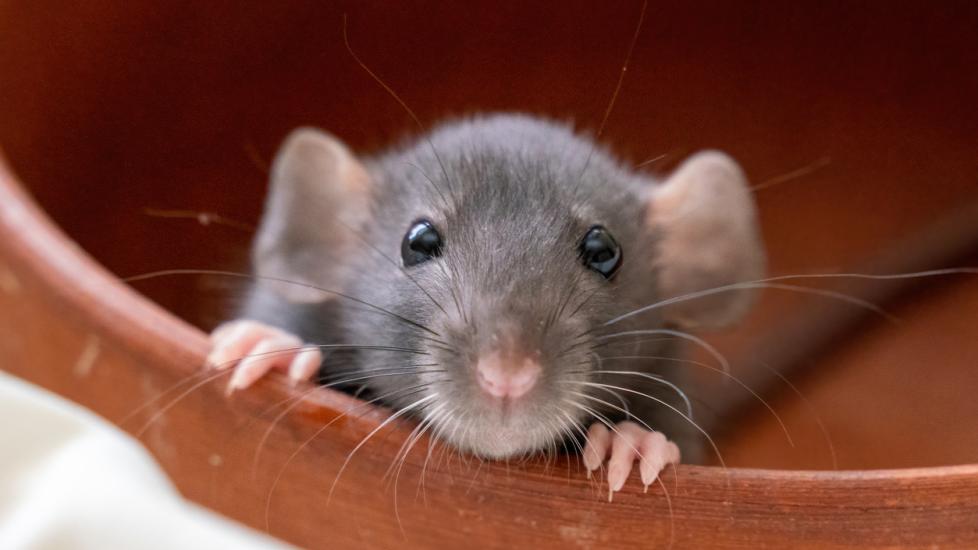How Long Do Rats Live?
iStock/svetograph
Pet rats are easy to keep, highly social, and intelligent. Like all pets, a rat’s lifespan should be considered before bringing them home, in addition to researching all aspects of the species.
While some small mammals like rabbits and ferrets may live to 10 years old, the average rat lifespan typically reaches 2–4 years of age. This relatively brief time commitment makes them ideal pets for some people, but not if you’re looking for a more long-term companion.
How Long Do Pet Rats Live?
Rats typically have short lives. The domesticated rat lifespan is 2–4 years, but the longest-living rat lived to be 7 years old!
Rats are typically sexually mature around 37–75 days old. You can differentiate males from females by around 3–4 weeks old. Females typically live longer and mature earlier than males.

How Long Do Wild Rats Live?
A pet rat’s life expectancy is much better than their wild counterparts, that typically live less than a year. The average lifespan of a rat in the wild is generally shorter due to:
-
Predation
-
Disease
-
Lack of adequate food and water
-
Lack of veterinary care
Rat Species and Their Lifespans
While the average rat lifespan may be shorter compared to other domestic pets, some pet rat breeds may have slight disadvantages or advantages. For example, the lifespan of a fancy rat and dumbo rat lifespan is likely to be longer than a hairless rat, which is more prone to health issues.
-
Hairless rat: These rats typically have more health issues, resulting in a shorter life expectancy.
-
White rat: Breeding practices can cause white rats can have a shorter life if they have certain mutations and deformities. White rats are more susceptible due to their common breeding/use in laboratory testing.
-
Fancy rat: Pet fancy rats bred by a responsible breeder will have a typical 2- to 4-year lifespan. Some breeders breed their rats specifically to try for a longer fancy rat lifespan.
-
Dumbo rat: While dumbo rats have characteristic side-set ears, this does not affect their life expectancy.
How Do You Calculate Rat Years to Human Years?
Once rats reach adulthood, each month of their life is equivalent to about 2.5 human years. This means by 3 years old, a rat is about 90 years old in human years.

Factors That Affect a Rat's Lifespan
Genetics and inbreeding can play a significant role in health conditions and a rat’s lifespan. However, most life-threatening health conditions in pet rats are secondary to poor care. The best way to keep a pet rat happy and healthy for as long as possible is to perform plenty of research before adopting them.
A proper diet is crucial. Make sure they have good-quality pellets and are offered some vegetables daily, in addition to fresh water. Small, occasional amounts of fruit or lean meat are also recommended. Watching your pet rat’s weight so they don’t get obese will also decrease health conditions later in life.
Rat teeth are constantly growing, which means they need to chew and gnaw throughout the day. Make sure to provide the appropriate toys and chews to continuously wear down their teeth. Tooth overgrowth and misalignment are another common pet rat problem that can mostly be avoided with the right chews.
How to Improve Your Rat's Lifespan
With a few easy tips and tricks, you can be well on your way to a happy and healthy pet rat! Whether you are doing research before bringing a rat home or if you already have a pet rat, here are some ways to improve care and even increase your pet rat’s lifespan:
-
Frequent (every six to 12 months) veterinary examinations
-
Periodic blood work and fecal parasite testing with your veterinarian
-
Weigh your pet rat weekly with a gram scale to document any changes
-
Feed only rat-specific pellets (talk to your veterinarian about how much to feed
-
Offer vegetables daily and occasional fruit or lean meat, like chicken
-
Keep their cage clean and free from waste odors that can cause upper respiratory issues
-
Keep the room temperature between 65–80 degrees F and 40–70% humidity
-
Never feed seeds or seed-based diets as they do not provide appropriate nutrients and can lead to weight gain
-
Monitor your pet rat for any changes in hair coat, behavior, weight loss, or swellings; weight loss is the most common first sign of a sick pet rat.
-
Rats are social creatures and prefer to live in groups, but ensure you have a large enough cage size to avoid overcrowding
-
To reduce the risk of mammary cancer, some veterinarians may recommend spaying and neutering rats before they are 5–7 months old
-
Rats have poor eyesight—make sure they are safe when they are roaming outside their cage (this includes no access to cords or tight spaces where they can get stuck)
-
As a prey species, rats should not be allowed to roam free with dogs, cats, or ferrets
-
Do not use wire floors, which can cause dermatitis
-
Rats are social and intelligent and require mental stimulation, so let them out of their cage at least 30 minutes a day and rotate toys and chews to provide enrichment
-
Rats enjoy exercise wheels, but make sure they are solid as to not cause injury
References
-
Leck DVM ABVP, Susan. Veterinary Information Network, Inc. A Quick Reference Guide to Unique Pet Species Rat Pet Care. January 2011.
-
Pollock DVM, DABVP, Christal. LafeberVet. Basic Information Sheet: Rat. February 2010.
-
O’Connell CVT, Jessi.. Chicago Exotics Animal Hospital. Rat Care. 2022.
-
Guinness World Records. Oldest rat ever. 2022.






